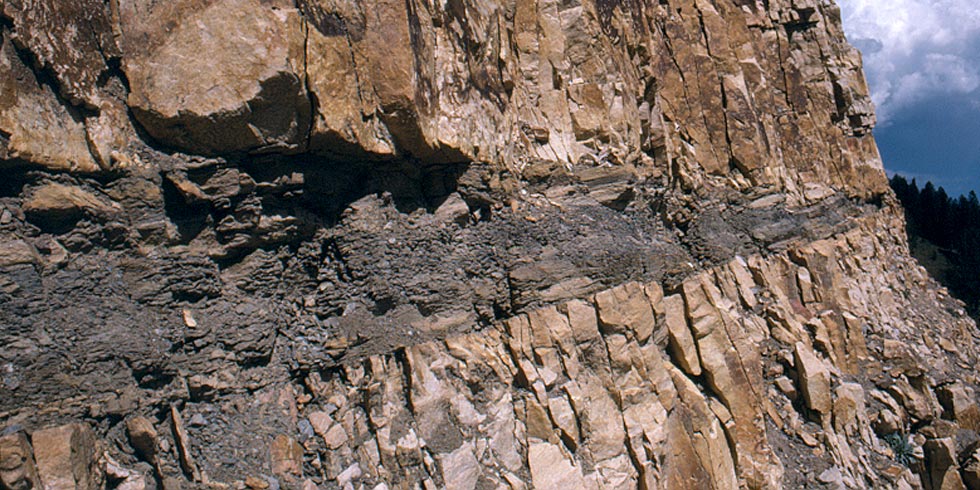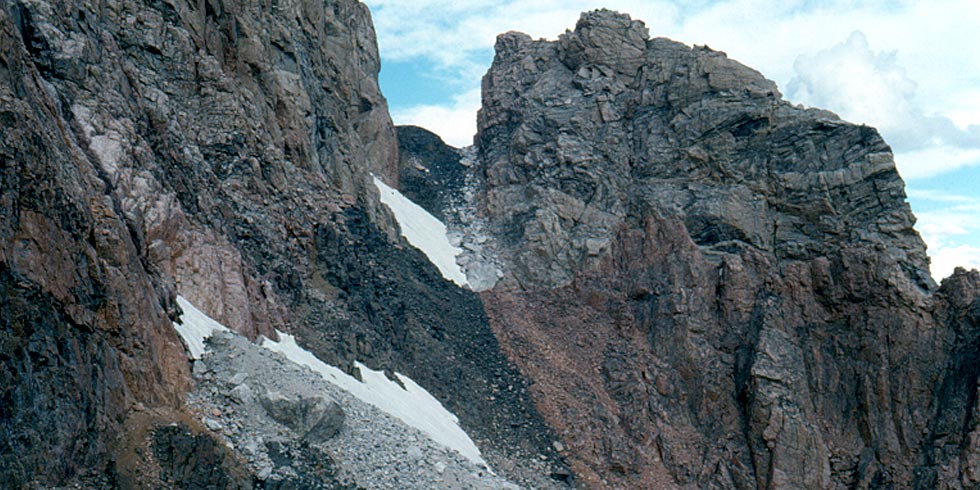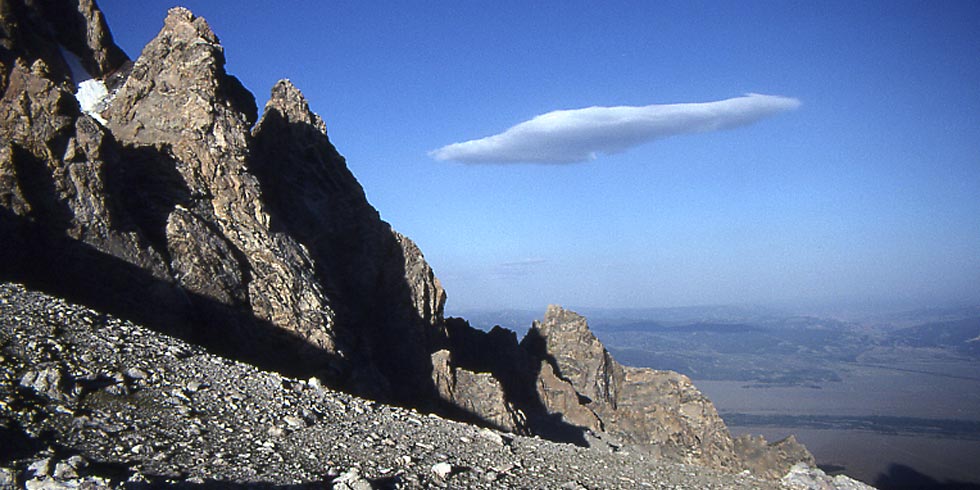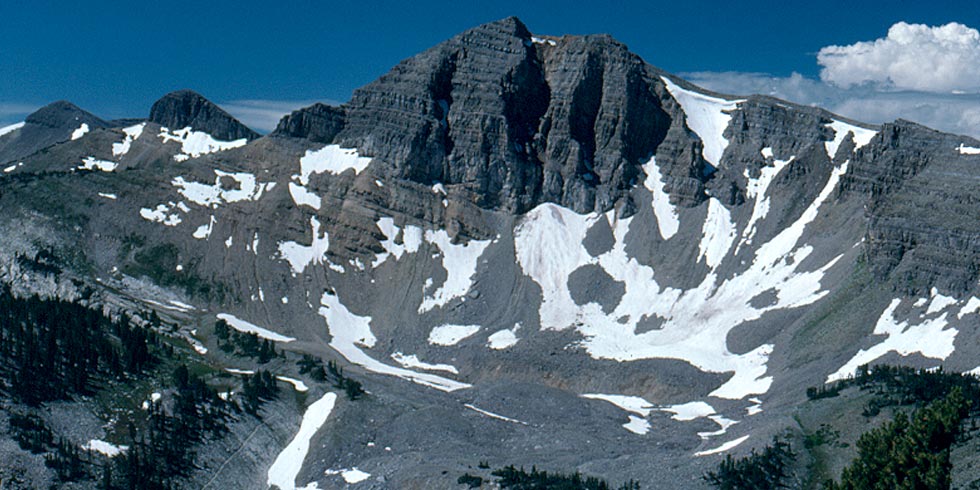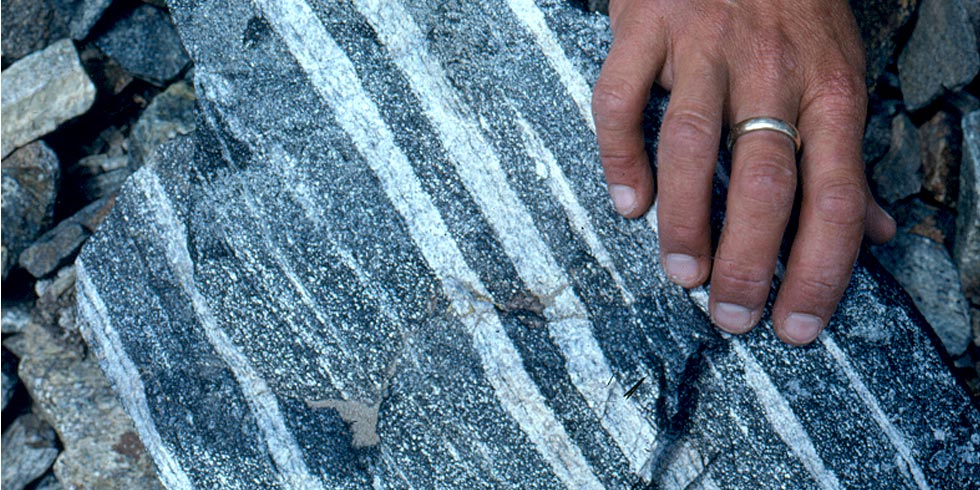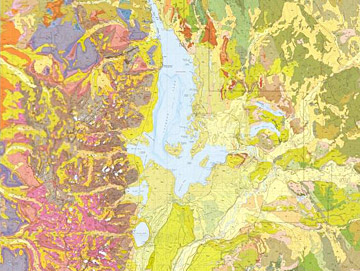 |
Geologic Map
Grand Teton National Park, Teton County, WYEach color represents a different geologic unit; a single rock type or a group of rocks formed at the same time. A solid line represents a fault, the axis of a fold or the boundary between units.
Teton Rocks
Metamorphic Rocks
Metamorphic rocks form from other rocks. Heat and pressure deep underground transform or metamorphose sedimentary, igneous or other metamorphic rocks into new rocks. These rocks may appear as if they were once molten, but they were more like silly putty that deformed slowly over a great length of time.
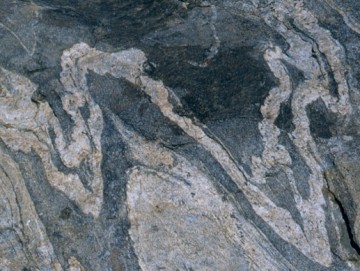 |
Gneiss
Site: Mt. Moran, TeewinotGneiss forms at high temperature and pressure deep underground. Layered gneiss has distinct layers alternating dark gray and white. These layers form during metamorphism and are not the original rock layers.
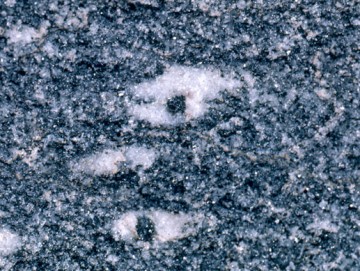 |
"Bright-eyed" Gneiss
Biotite mica provides the dark gray background. Small magnetite crystals, rich in iron, form the “eyes” surrounded by bleached zones with no biotite. Search for this rock along the Death Canyon trail.
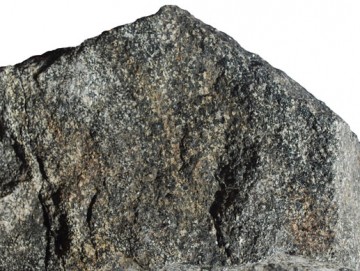 |
Amphibolite
Amphibolite forms at moderate temperatures and pressures of the minerals hornblende and plagioclase. Hornblende is dark green to almost black and glints in the sun. Plagioclase is white giving a speckled look.
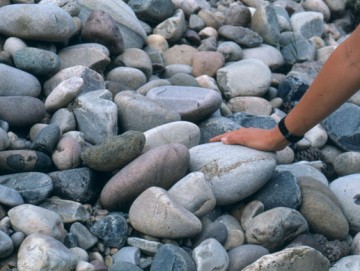 |
Quartzite
Amphibolite forms at moderate temperatures and pressures of the minerals hornblende and plagioclase. Hornblende is dark green to almost black and glints in the sun. Plagioclase is white giving a speckled look.
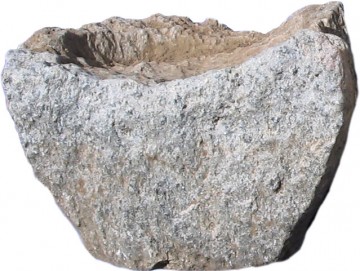 |
Steatite
Steatite is also known as soapstone because of the rock’s slippery feel. It is composed mostly of talc, the Earth’s softest mineral, and is very easily carved. American Indians carved bowls from steatite.
Teton Rocks
Igneous Rocks
Igneous rocks crystallize from magma originating in the Earth’s crust or mantle. The magma cools and crystallizes to form many common rocks like granite and basalt. The magma may erupt to form volcanic rocks, or cool underground to form intrusive rocks.
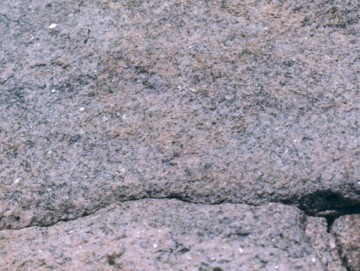 |
Granite
Silica-rich magma crystallizes underground to form granite. The rock is white or sometimes pink speckled with black mica and lacks layers. Granite is the hardest rock in the park forming the highest peaks.
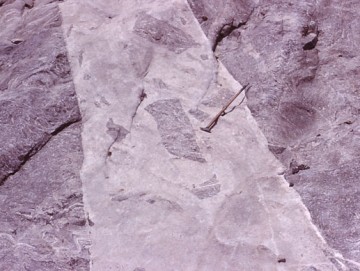 |
Pegmatite
Silica-rich magma squeezes into cracks in the bedrock and crystallizes slowly to form pegmatite. The chemical composition is the same as granite, but the crystals are larger because they grow more slowly.
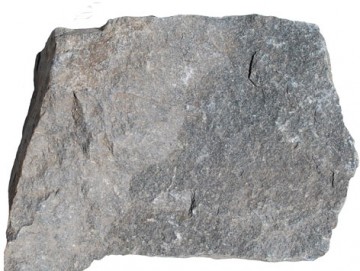 |
Diabase
Basaltic-magma with less silica than granite crystallizes underground instead of erupting to form diabase. Look for narrow vertical black dikes transecting the faces of Mount Moran and the Middle Teton.
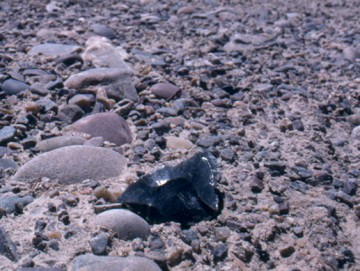 |
Obsidian
Obsidian is black volcanic glass. If silica-rich magma cools very fast, crystals do not grow and glass forms. American Indians sought obsidian in Yellowstone and on Teton Pass to flake into projectile points.
Teton Rocks
Sedimentary Rocks
Sedimentary rocks form at or near the Earth’s surface from weathered bits of rocks or from chemical precipitation. Layers of sediment deposited in water or on land become buried and compressed into rocks such as sandstone. Water may evaporate and precipitate compounds that form chemical rocks such as limestone.
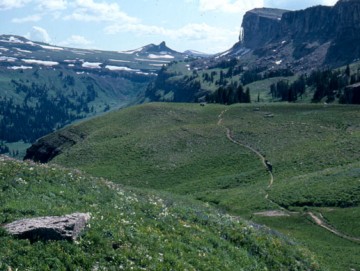 |
Shale
Burial compacts mud composed of clay, organic material and rock fragments into shale. Shale is soft and usually black to dark gray in color. It forms slopes between cliffs of more resistant sedimentary rocks.
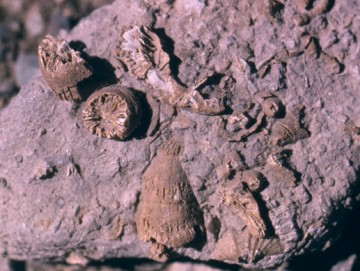 |
Limestone
Limestone is both a rock formed of fossils such as shells and corals and a chemical precipitate of calcium carbonate. Light to dark gray in color, it forms sedimentary cliffs like the Death Canyon Shelf.
 |
Conglomerate
Conglomerate is a rock made of rounded pieces of older rocks cemented together with sandstone. The quartzite cobbles covering the valley floor likely eroded out from conglomerates found northeast of the park.
Discover Grand Teton is funded by the Grand Teton National Park Foundation in partnership with the National Park Service.
gtnpf.org
gtnpf.org
